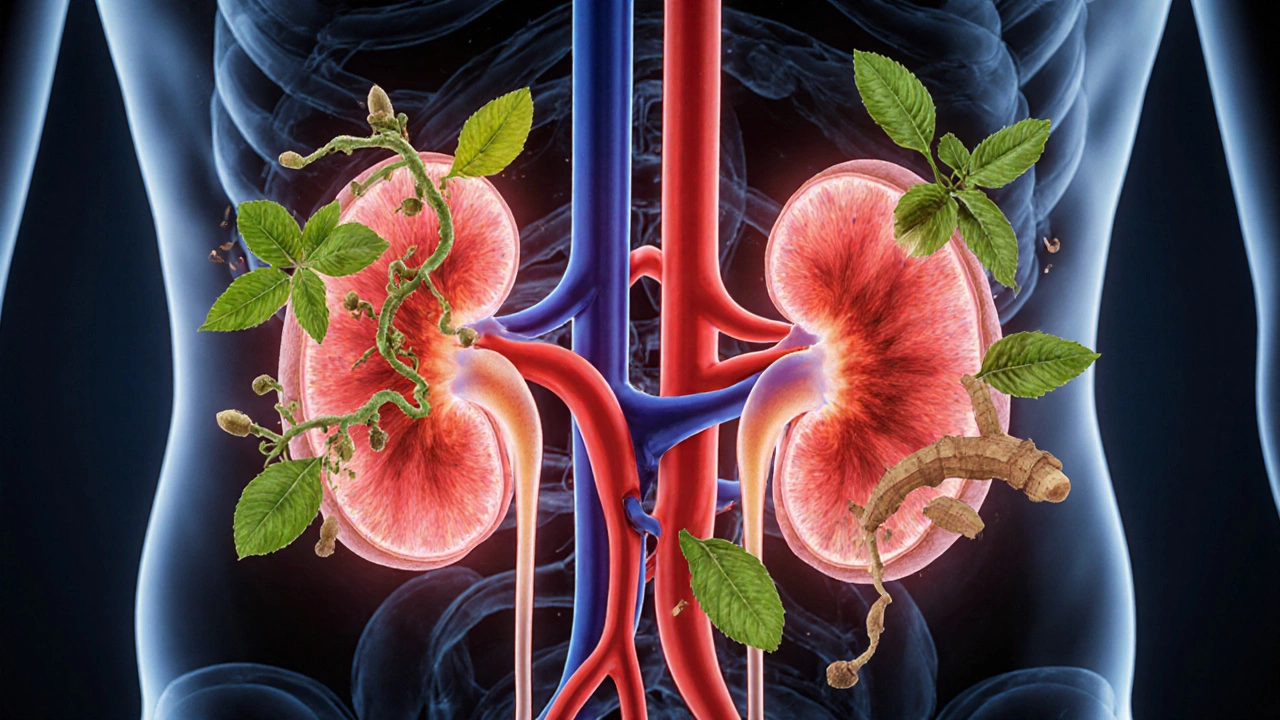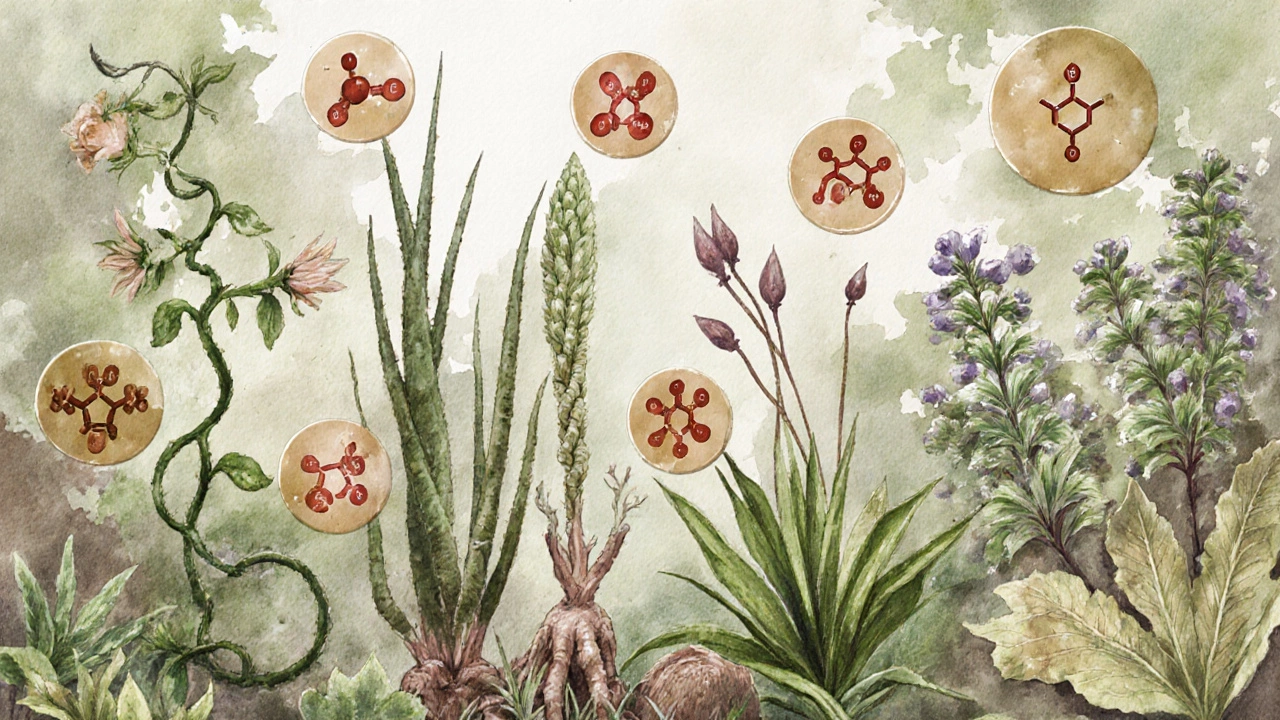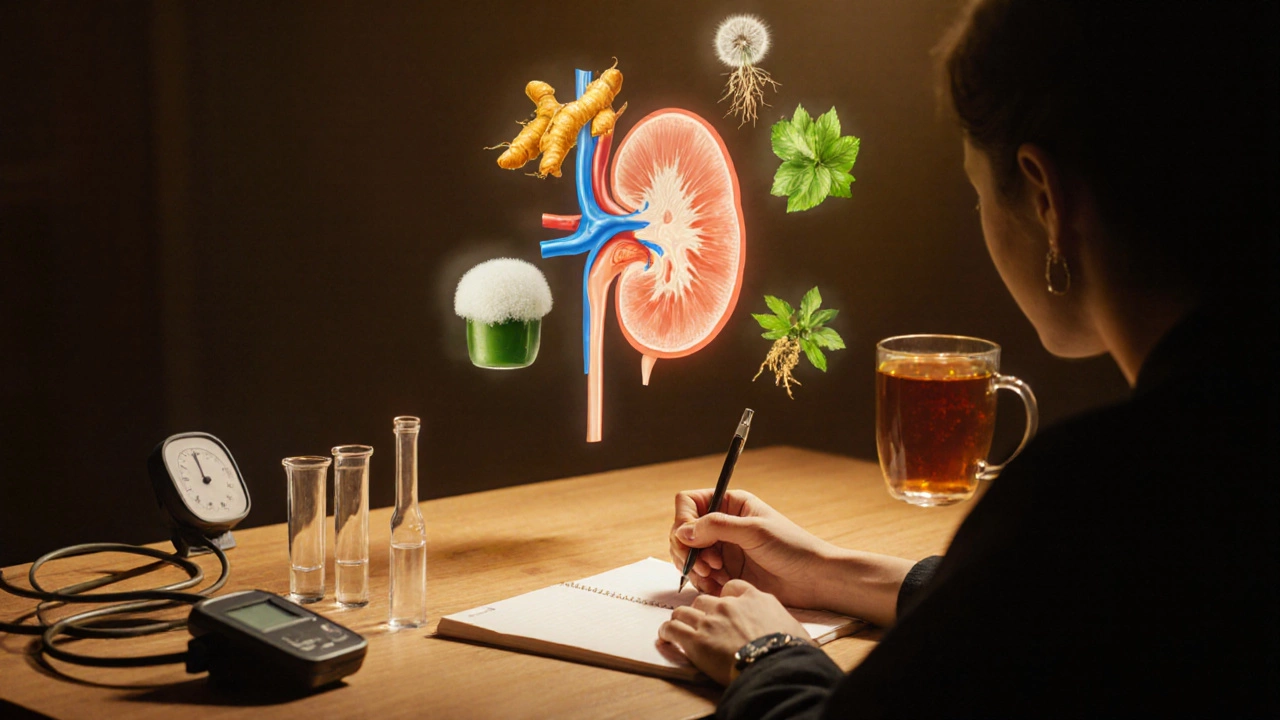
Nephrotoxic Herb Safety Checker
Enter any herbal supplement name to check if it's safe for kidney health. Based on the latest clinical evidence and the article "Kidney-Harmful Herbs: What to Avoid for Safe Supplement Use".
Toxic Compound:
Risk Threshold:
Primary Kidney Issue:
Recommendation:
When it comes to kidney‑harmful herbs are plant‑based supplements that can damage kidneys or impair their function, knowing which ones to steer clear of can save you from serious health issues. Many people assume natural means safe, but the kidney is a delicate filter that reacts strongly to certain chemicals found in herbs. This guide breaks down the most notorious culprits, explains how they hurt renal tissue, and gives you practical steps to protect your kidneys while still enjoying the benefits of herbal wellness.
Why the Kidneys Are Vulnerable to Herbs
The kidneys receive about 20% of cardiac output, exposing them to high concentrations of whatever you ingest. Their job is to filter waste, balance electrolytes, and regulate blood pressure. When a herb contains nephrotoxic compounds-alkaloids, aristolochic acid, glycyrrhizin, etc.-those substances travel straight to the renal tubules. Over time, they can cause inflammation, oxidative stress, or direct cell death, leading to acute kidney injury (AKI) or chronic kidney disease (CKD). Even short‑term use of a potent herb can trigger a cascade that the body struggles to reverse.
Red Flags to Spot Problematic Herbal Products
- Labels that boast “high potency” or “concentrated extract” without dosage guidance.
- Products sourced from regions with lax quality‑control standards (e.g., certain parts of Asia where aristolochic‑acid‑containing plants are still harvested).
- Missing third‑party testing reports or batch‑specific certificates of analysis.
- Claims that the herb can “detoxify” or “cleanse” kidneys-often a sign the maker knows the herb is risky.
If any of these appear, treat the supplement with caution and consult a healthcare professional before adding it to your routine.
Herbs with Documented Nephrotoxic Effects
The following list includes herbs that have been linked to kidney damage in clinical case reports, animal studies, or large‑scale epidemiological research. Each entry notes the toxic component, typical dosage that raises concern, and the most common kidney‑related outcome.
| Herb | Key Toxic Compound | Typical Risk Dose | Primary Kidney Issue | Recommendation |
|---|---|---|---|---|
| Aristolochia | Aristolochic acid | > 0.1g daily (raw) for >2weeks | Interstitial nephritis, progressive CKD | Avoid entirely |
| Aconite (Aconitum) | Aconitine | 0.5-1mg pure extract | Acute tubular necrosis | Use only under strict medical supervision |
| Chaparral (Larrea tridentata) | Lignans (NDGA) | 400mg daily for >1month | Acute renal failure | Discontinue; seek alternatives |
| Ephedra (Mahuang) | Ephedrine alkaloids | ≥100mg daily | Hypertensive nephrosclerosis | Prefer non‑stimulant herbs |
| Licorice (Glycyrrhiza glabra) | Glycyrrhizin | >3g daily (root) for >2weeks | Fluid retention, potassium loss, secondary AKI | Limit to <0.5g/day; monitor electrolytes |
| Kava (Piper methysticum) | Kavalactones (high dose) | ≥300mg daily (standardized) | Combined hepatonephrotoxicity | Use short‑term, avoid if liver disease present |
| Pennyroyal (Mentha pulegium) | Pulegone | >1g oil or 10ml tincture | Acute tubular necrosis | Avoid; very toxic |
| Comfrey (Symphytum officinale) | Pyrrolizidine alkaloids | Topical use is safer; oral >150mg/day risky | Chronic nephropathy | Do not ingest; use only externally for wounds |

Deep Dive into the Most Dangerous Herbs
Aristolochia - The Classic Kidney Killer
Aristolochia species (also called birthwort) contain aristolochic acids that bind DNA and cause mutations. The most infamous case arose from a weight‑loss clinic in the 1990s where patients developed rapid CKD after taking aristolochic‑acid‑containing teas. The toxin attacks the proximal tubules, leading to fibrosis and irreversible loss of function. Because the damage accumulates silently, many victims only notice trouble when glomerular filtration rate (GFR) has already dropped below 30mL/min.
Aconite - A Potent, Fast‑Acting Poison
Aconite is used in some traditional preparations for pain relief, but its alkaloid aconitine interferes with sodium channels in renal epithelial cells. Even a single dose close to the therapeutic range can cause severe nausea, vomiting, and a sudden rise in serum creatinine. Cases reported in East Asia show that patients often present with oliguria (low urine output) within 24hours of ingestion.
Chaparral - The “Liver‑Kidney” Herb
Western herbalists praised chaparral for its antioxidant properties, yet the lignan NDGA (nordihydroguaiaretic acid) is a double‑edged sword. In high doses it generates free radicals that overwhelm kidney antioxidant defenses, leading to acute tubular necrosis. A 2022 case series from the United States linked daily chaparral supplements (400mg+) to three instances of AKI that resolved only after dialysis.
How to Protect Your Kidneys When Using Herbs
- Start low, go slow. Begin with the smallest possible dose and monitor how you feel.
- Keep a journal of any new supplement, including brand, batch number, and dosage.
- Get baseline kidney labs (creatinine, eGFR, electrolytes) before starting any new herb.
- Schedule follow‑up labs after 4-6weeks of continuous use.
- Prefer whole‑food sources or culinary herbs (e.g., oregano, thyme) over concentrated extracts.
- Stay hydrated; adequate water helps flush potential toxins.
Even with these safeguards, if you notice swelling, dark urine, or unexplained fatigue, stop the supplement immediately and see a clinician.
Safer Alternatives for Common Health Goals
Many users turn to the risky herbs listed above for pain relief, weight loss, or detoxification. Below are evidence‑backed, kidney‑friendly options:
- Pain relief: Turmeric (curcumin) at 500mg with black‑pepper enhances anti‑inflammatory effects without taxing the kidneys.
- Weight management: Green tea (Camellia sinensis) brewed as a tea, not an ultra‑concentrated extract, provides modest metabolism boost.
- Detox support: Dandelion root (Taraxacum officinale) in moderate tea form aids liver function and is gentle on kidneys.

Quick Checklist: Is This Herb Kidney‑Safe?
- Does the label list any of the eight herbs above? If yes, stop.
- Is the product a high‑strength extract (>50%)? If yes, verify third‑party testing.
- Do you have existing kidney disease or hypertension? If yes, avoid stimulants like Ephedra.
- Have you discussed the supplement with a pharmacist or doctor? If no, schedule a quick chat.
- Can you monitor kidney function labs? If not, choose a herb with a safety record.
When to Seek Professional Help
Kidney injury can be silent at first. If any of these symptoms appear after starting a new herb, call a healthcare provider right away:
- Decreased urine output or dark, tea‑colored urine.
- Swelling in ankles, feet, or face.
- Unexplained high blood pressure.
- Persistent nausea, vomiting, or severe abdominal pain.
Early intervention can prevent permanent loss of function and may spare you from dialysis.
Frequently Asked Questions
Can small amounts of aristolochia be safe?
No. Aristolochia contains aristolochic acid, which is toxic even at low doses. Regulatory agencies in the U.S., EU, and Canada have banned its use in dietary supplements.
Is licorice root harmful for everyone?
Licorice is mainly dangerous when taken in large quantities over weeks. People with hypertension, heart disease, or kidney issues should limit intake to less than 0.5g of the raw root per day.
How long does it take for kidney damage from a toxic herb to show up?
It varies. Acute toxicity (e.g., aconite, pennyroyal) can manifest within hours to days. Chronic exposure (e.g., aristolochic acid, pyrrolizidine alkaloids) may take months or years before labs reveal reduced GFR.
Are there any lab tests to monitor herb‑related kidney stress?
Standard kidney panels-serum creatinine, eGFR, BUN, and electrolytes-are the first line. In suspicious cases, a urinalysis for protein or microscopic blood can catch early tubular injury.
Can I use herbal teas if I have CKD stage 3?
Yes, but stick to well‑studied, low‑risk herbs like ginger, peppermint, or rooibos. Avoid any tea that lists the eight harmful herbs or that is sold as a concentrated “detox” blend.





Rohan Talvani
I am a manufacturing expert with over 15 years of experience in streamlining production processes and enhancing operational efficiency. My work often takes me into the technical nitty-gritty of production, but I have a keen interest in writing about medicine in India—an intersection of tradition and modern practices that captivates me. I strive to incorporate innovative approaches in everything I do, whether in my professional role or as an author. My passion for writing about health topics stems from a strong belief in knowledge sharing and its potential to bring about positive changes.
view all postsWrite a comment